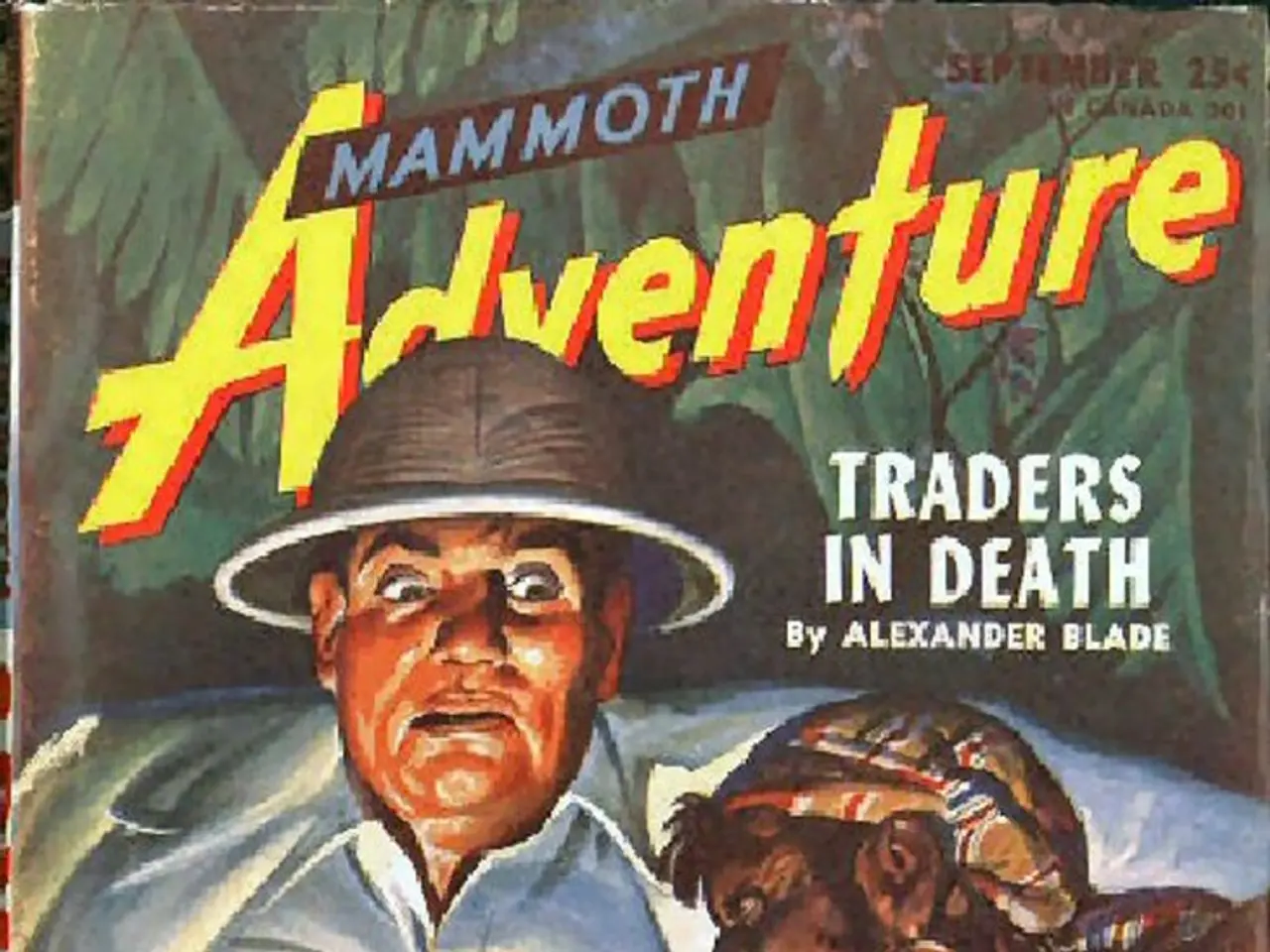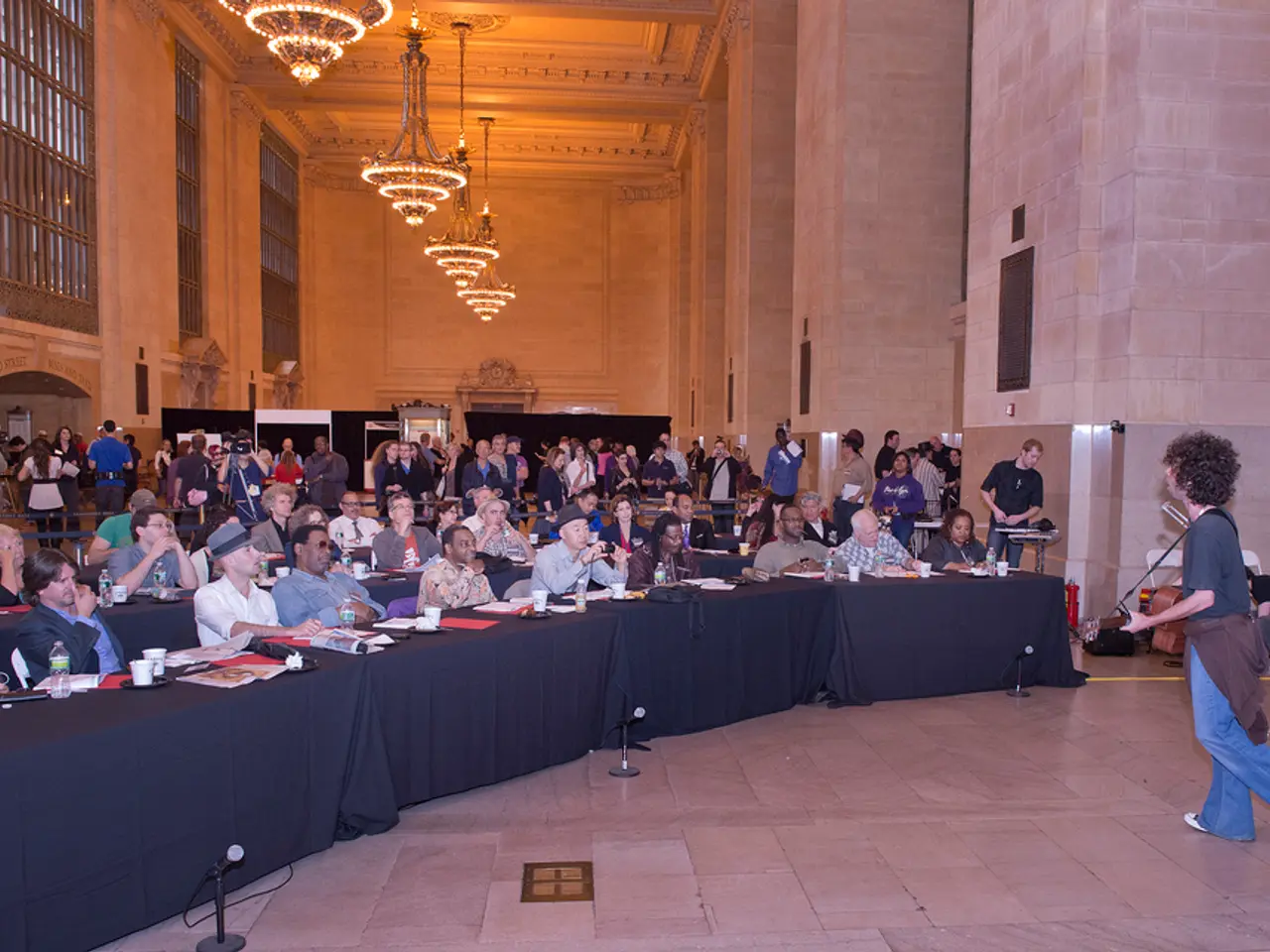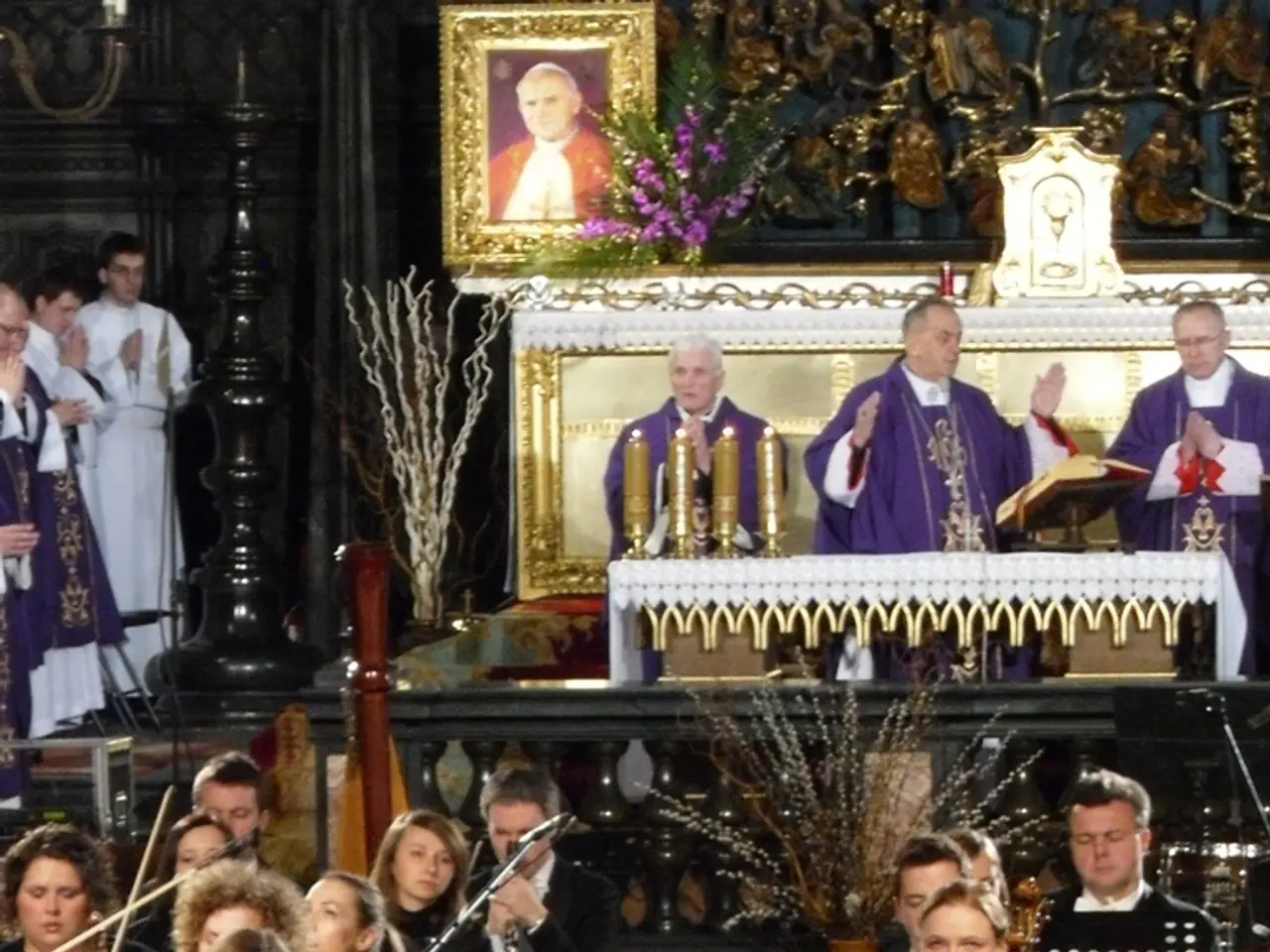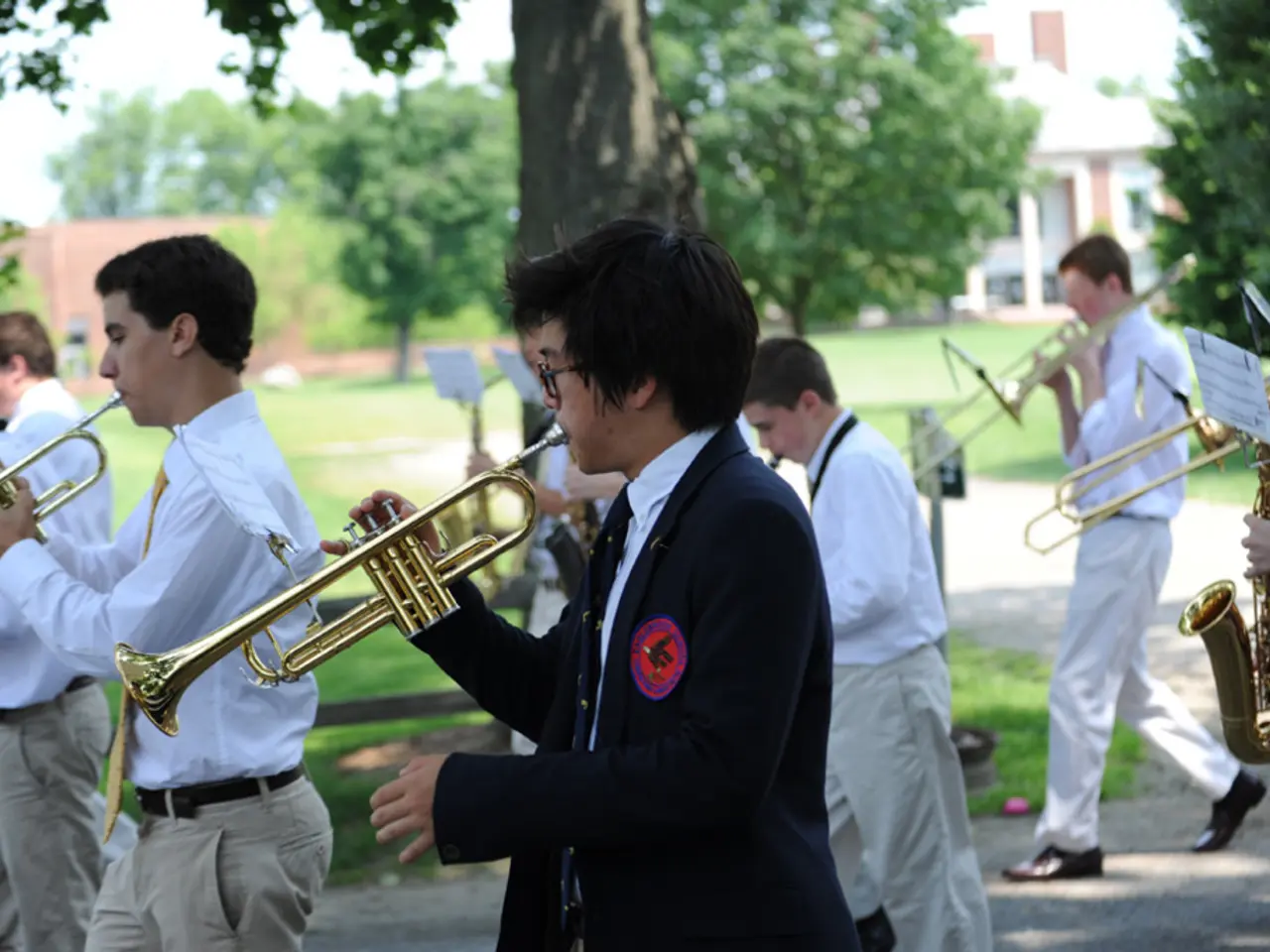Behind the Scenes of Midsommar: Director's Anthem of Artistry
In the realm of contemporary cinema, Ari Aster's Midsommar stands out as a singular example of folk horror that innovates the genre by emphasising psychological dread rooted in everyday emotions—loneliness, rejection, and trauma—within a mesmerising and culturally rich nightmare landscape.
The film's distinctiveness lies in its portrayal of horror that unfolds not just through graphic pagan rituals but through intense emotional trauma and relationship breakdowns, especially reflecting Aster’s own experiences of grief and a painful breakup.
One of the key factors that make Midsommar a standout is its daylight horror atmosphere. Unlike typical folk horror films that often use darkness and night to create fear, Midsommar builds dread in perpetual daylight and sunny settings, which paradoxically amplify the unsettling, surreal, and disorienting mood. This daylight horror subverts traditional genre expectations and intensifies the psychological unease.
Aster infuses the film with his personal trauma from a breakup, giving the story emotional depth beyond mere shock or gore. The horror is as much about the protagonist’s internal suffering, isolation, and relationship dynamics as the external cult threats. This blending of folk horror with a breakup narrative creates a unique psychological complexity.
The film avoids simplistic good versus evil dichotomies. Instead, it presents characters who are flawed, selfish, or “jerks” across the board, spreading human cruelty and malice in nuanced ways. This moral ambiguity adds realism and emotional complexity, making the horror more relatable and disturbing.
Aster’s direction is noted for its hypnotic visual style and immersive, trippy storytelling that pulls viewers fully into the strange and ritualistic world of the Swedish cult. The meticulous set design and costumes enhance the authenticity and creepiness of the folk festival rites.
The protagonist, Dani, wears a flower crown in Midsommar that evolves from a symbol of innocence to one of empowerment and transformation. The May Queen ceremony symbolises Dani's emergence as a central, empowered figure within the Hårga community.
The film can be read as an explicit feminist work, focusing on a woman’s perspective oppressed by male relationships and finding ultimate empowerment through separation and belonging to a new community. This adds layers of social meaning and emotional resonance to the horror narrative.
In Midsommar, Ari Aster constructs a fully-realised, insular community with its own rituals and beliefs, making the foreign culture both intriguing and terrifying. Aster weaves a tapestry of rich symbolism and evocative imagery, transforming the bucolic setting into a character of its own.
Runic symbols in Midsommar convey hidden meanings and foreshadow events, deepening the narrative's mythological roots. The film's score, composed by Bobby Krlic (The Haxan Cloak), employs a mix of traditional Scandinavian folk music and eerie, modern ambient sounds. Moments of silence are punctuated by sudden, sharp noises that disrupt the viewer's sense of security.
Bright, saturated colours are used to juxtapose the sinister undertones of the narrative, creating an unsettling yet captivating atmosphere. Floral motifs symbolise life, fertility, and the cyclical nature of existence, while light and darkness contrast sharply, highlighting the dichotomy between appearance and reality, creating a sense of disorientation and vulnerability.
Witnessing Christian's disloyalty becomes a turning point for Dani, prompting her to sever ties with her past dependencies. Traditional instruments and communal singing within the film's world enhance the feeling of immersion and unease. Dani's ultimate acceptance of the Hårga community represents her newfound strength and identity. Her transformation from a grief-stricken, codependent individual into a figure of empowerment and autonomy is both compelling and unsettling.
In Midsommar, Ari Aster uses perpetual daylight to turn the benign into the menacing, subverting traditional horror tropes. The sparse and haunting ambient sounds often leave the viewer anticipating the next moment of horror. These auditory choices are not just background elements but integral parts of the storytelling, amplifying the emotional impact and drawing viewers deeper into the film's unsettling embrace.
References:
[1] Kroll, J. (2019, July 3). 'Midsommar' Review: Ari Aster's Harrowing Folk Horror Is a Masterpiece. IndieWire. Retrieved from https://www.indiewire.com/2019/07/midsommar-review-ari-aster-harrowing-folk-horror-is-a-masterpiece-1202174463/
[2] Fleming, M. (2019, April 30). 'Midsommar': Film Review. Deadline. Retrieved from https://deadline.com/2019/04/midsommar-film-review-ari-aster-ariane-labed-william-jackson-harper-1202615083/
[3] Ehrlich, J. (2019, July 3). 'Midsommar' Review: Ari Aster's Folk Horror Masterpiece Is a Triumph of Emotional Terror. Polygon. Retrieved from https://www.polygon.com/2019/7/3/20682599/midsommar-review-ari-aster-horror-film-folk-psychological
[4] Kroll, J. (2019, July 3). 'Midsommar' Review: Ari Aster's Harrowing Folk Horror Is a Masterpiece. IndieWire. Retrieved from https://www.indiewire.com/2019/07/midsommar-review-ari-aster-harrowing-folk-horror-is-a-masterpiece-1202174463/
- The filmmaker Ari Aster's Midsommar is a unique work in the realm of contemporary cinema, with a focus on folk horror genre, emphasizing psychological dread rooted in everyday emotions, and showcasing his personal experiences of grief and a painful breakup.
- The film's distinctiveness lies in its daylight horror atmosphere, with the director's choice to build dread in perpetual daylight and sunny settings, paradoxically magnifying the unsettling, surreal, and disorienting mood, and subverting traditional folk horror genre expectations.
- Aster's direction in Midsommar is noted for its hypnotic visual style, immersive and trippy storytelling, and meticulous set design, creating a fully-realized, insular community with its own rituals and beliefs, making the foreign culture both intriguing and terrifying.
- The film's narrative can be read as an explicit feminist work, focusing on a woman's perspective oppressed by male relationships and finding ultimate empowerment through separation and belonging to a new community.
- The film's entertainment value lies in its broad genre appeal, blending folklore, horror, and animation genres, appealing to both film buffs and general audiences with its rich cinematography, ambient sounds, and intricate symbolism.








